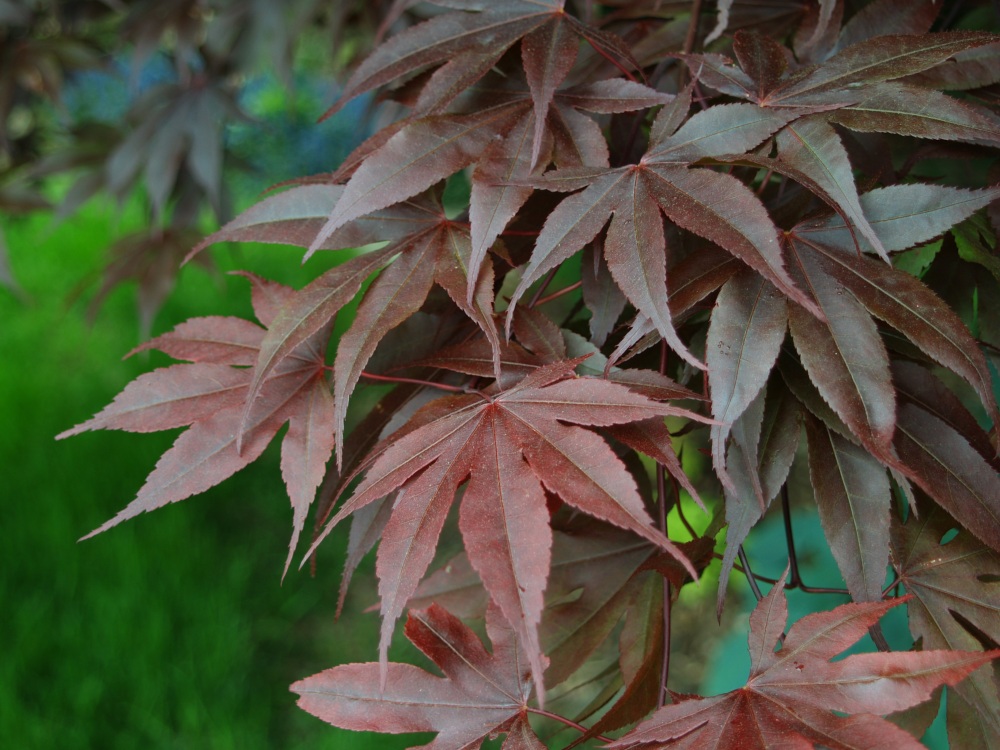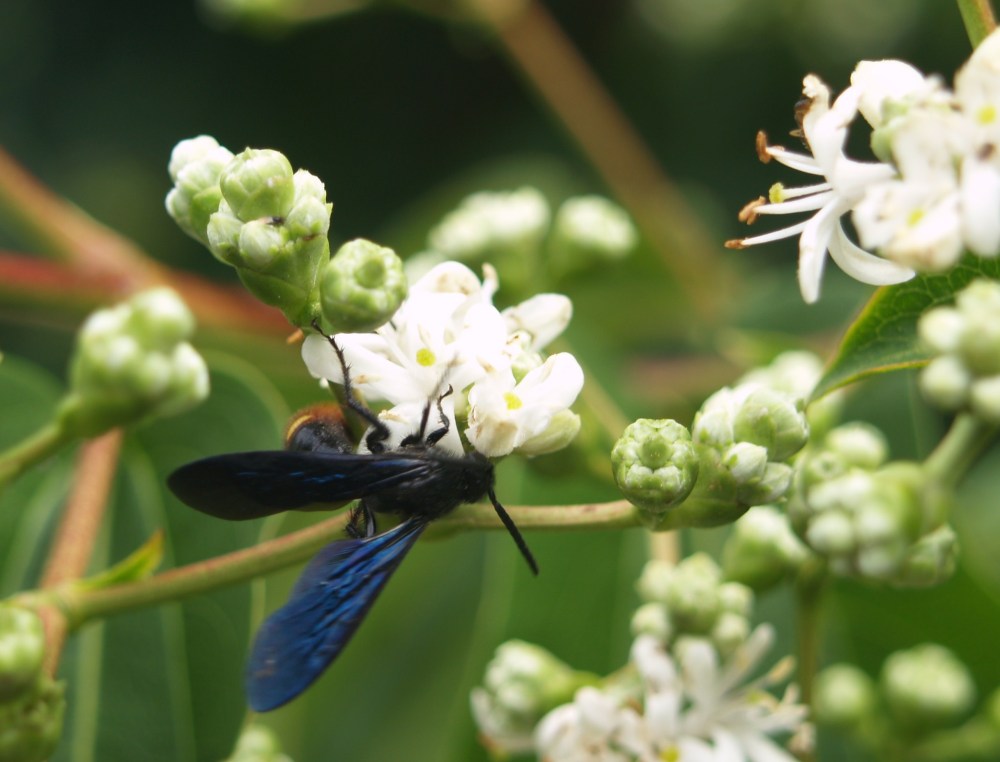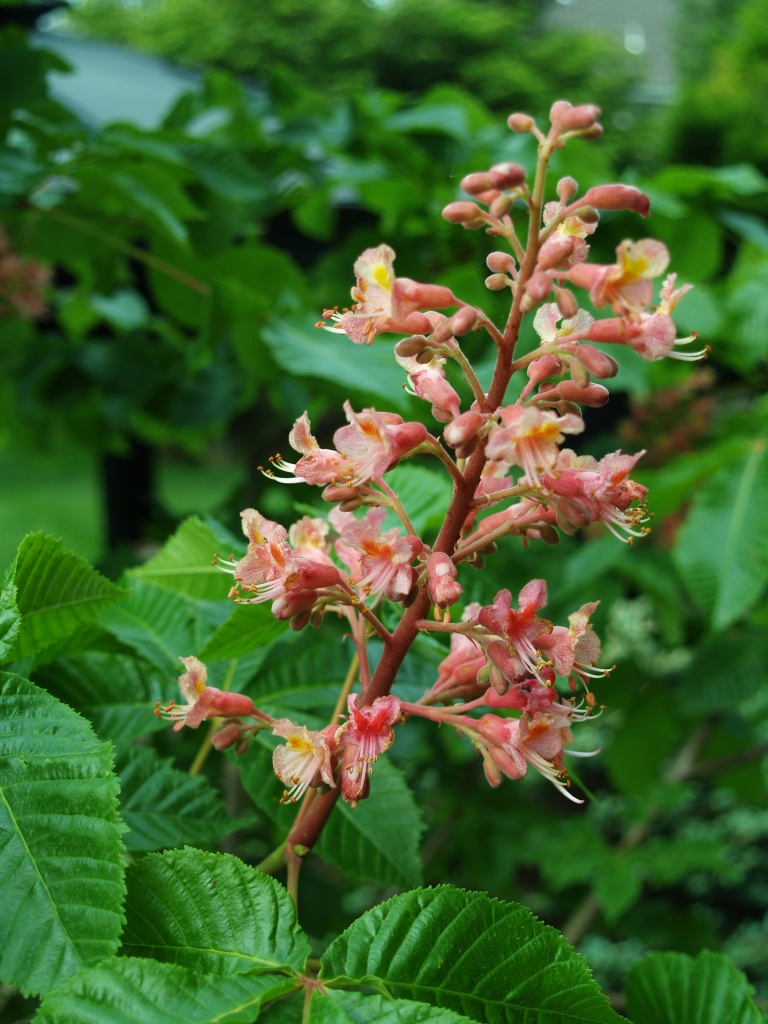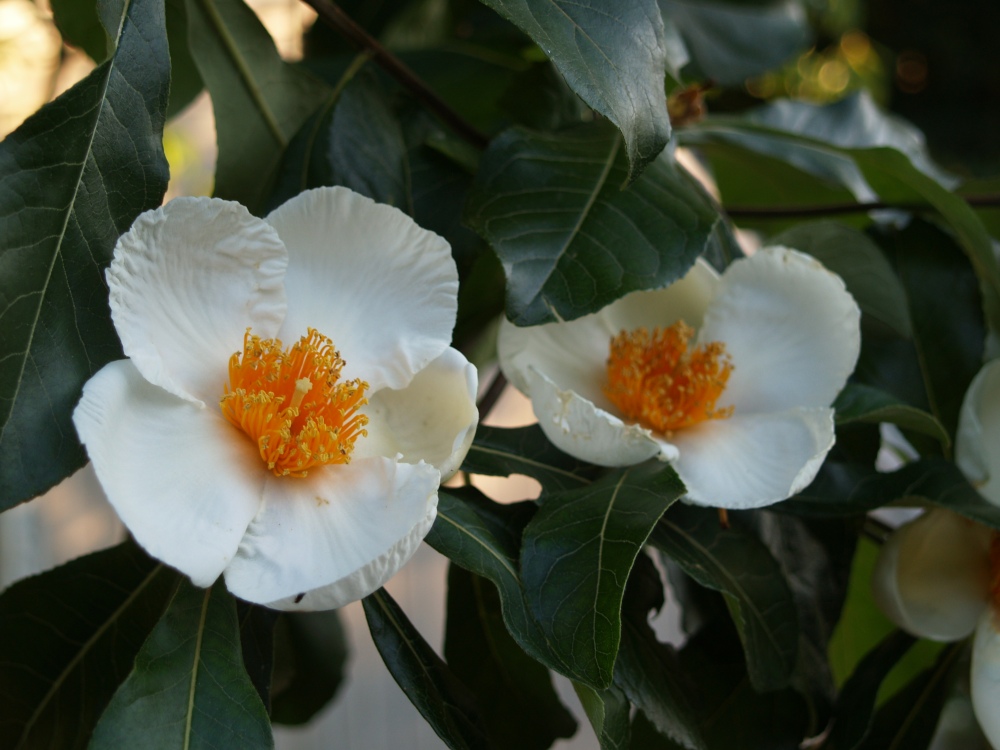Changes in the garden are unending, witnessed through the shorter span of the seasons and over decades if the gardener is so fortunate to remain in place long enough. Most alterations are for the better, while others are not so appreciated.
Perennials come and go in this garden that is dominated by trees, though there are lovely hostas and hellebores that have flourished for years in the increasing shadiness. Various cultivars of tickseeds (Coreopsis verticillata) and coneflowers (Echinacea) have been planted too often without success, though any novice will grow these with no trouble at all. This is not distressing at all.

A variety of flowering trees and Japanese maples (Acer palmatum, above) grow in the garden with minimal care, which best suits the gardener’s predilection for planting and dislike for maintenance chores. In twenty five years tiny saplings have grown nearly to mature size, with many becoming cherished treasures. And then, a storm strikes, with wind, or ice or snow, and a prized tree is lost.
When a Seven Son Tree (Heptacodium miconioides, below) is toppled in a summer downburst, this is not the equivalent of losing a toad lily that the gardener neglected to water in late summer. First, the gap left behind is significant, and not easily filled. This was not so small a tree when planted, and after eight or ten years it had grown wide enough that it required a bit of annual pruning so that it did not rattle against the aluminum summer house in every breeze.

The peeling bark and deeply veined leaves of the Seven Son were excellent, but the abundant clusters of white blooms in late summer that attracted hordes of bumblebees and butterflies were its primary attribute. And then, as autumn approached, the flowers were replaced by even more marvelous pink bracts.

The summer storm came and left quickly, but it snapped the tree cleanly at the ground. Initially, I had little doubt that suckers from the roots would quickly sprout, and after another year or two the tree would be as good as ever. But it didn’t.
A replacement tree of suitable size became impossible to locate, and a space so large that had been a focal point of this section of garden demanded a much better than ordinary tree. Probably too much consideration was given to the replacement, but finally a Red Horse Chestnut (Aesculus x carnea, below) was decided upon, a matter of convenience and availability more than it being the ideal choice.

And then, the horse chestnut flowered the following spring, and while I would prefer to have a Seven Son tree in the garden, another spot would be just fine. In another year or two, the horse chestnut will be even more extraordinary, though I suspect that in another fifteen years it could become more difficult to manage as it grows a bit too large.

Sadly, other gems have been lost in recent years to ice and snow, and a portion of the lower garden has become increasingly damp so the health of a large Franklin tree (Franklinia alatamaha, above) is threatened. Its leaves grow smaller each year as the surrounding ground becomes wetter, and with no impending remedy for the dampness I suspect that this year or the next will be its last. Unfortunately, this death is lingering rather than the immediate demise resulting when a tree is toppled in wind or snow.
But, here again will be opportunity, and perhaps this will also work out for the best.
Reblogged this on Eastern Grounds Landscaping, LLC.
Your commentary is as pensive as the photography…I thoroughly enjoy posts like these.
I absolutely love your Red Horse Chestnut…such an extraordinary tree!